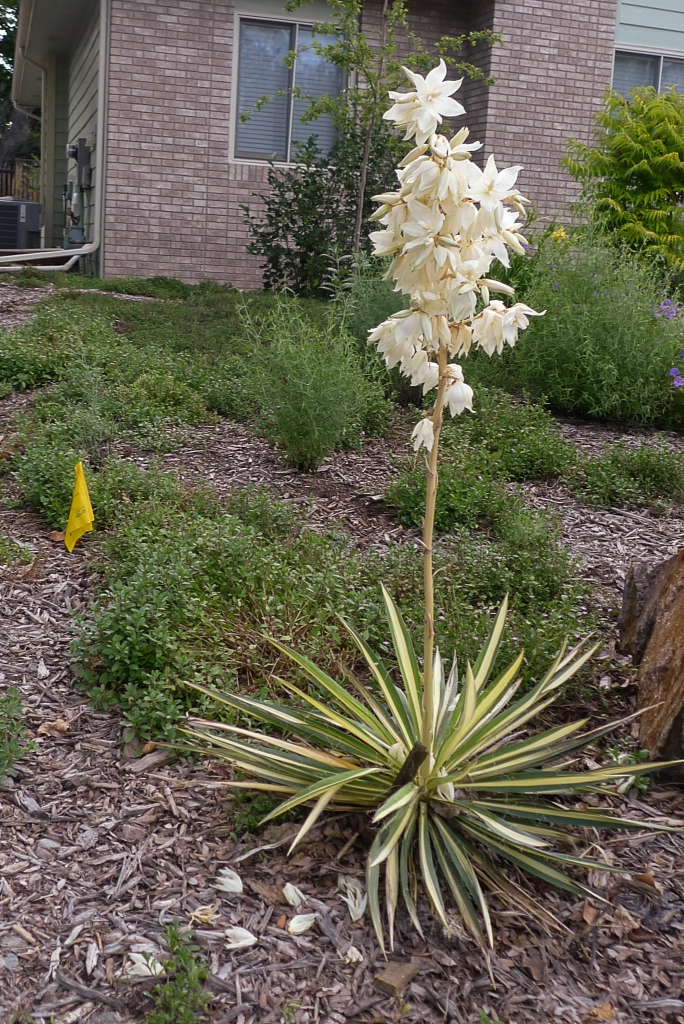
Long-blooming Rozanne cranesbill edges the border in front of the Autumn Brilliance serviceberry, providing a focal point for passersby.
Last September, I tore out my old landscaping and redesigned my front yard. The voles and rabbits wiped out some of my new plants, but most of the installation survived.
As you may be aware, it takes about three years for a new landscape to come into its own. I’m now almost one year into mine.
The Rozanne cranesbills in front of my Autumn Brilliance serviceberry have been real show-stoppers, blooming bright purple flowers since late May. They should continue blooming until frost. This morning, I cut some of them back because they had grown leggy. They’ll fill back in and rebloom. In the meantime, there are still some blooms for the bees to visit.
The pink and white soapwort groundcovers along my front foundation performed like the stalwarts that they are, and they set seed so for babies next spring. I’m aiming for a sea of tiny pink and white flowers along the foundation next spring.

Xeric plants, such as (front to back) Little Trudy catmint, Mojave sage and Sunset agastache make this arid corner look almost lush. My transplanted Genista Lydia (left) looks scruffy right now, but will eventually be beautiful again. The Pawnee Buttes sand cherry behind it is very happy in its home.
In my front, dry corner, my Norbonne blue flax died, so I replaced it with Little Trudy catmint, which is very happy in its location. I also discovered that one of my Genistas Lydia survived the move from Denver, so I transplanted it from the trench in my sister’s yard to my front yard. Although Lydia resents transplanting, she did bloom in June. I’ve pruned her back some, but she’s looking sparse and ragged. Once she recovers, however, she’ll be her usual gorgeous self.
I decided to tear out two of my three existing Peking contoneasters because they were planted too close together. After digging and chopping on one of the stumps for about five hours, I received an offer of help from my neighbor, Teo, who owns a landscaping company. He kindly came over and used his winch to pull the stump out of the ground, saving me another three or so hours of labor. After that experience, I decided to simply recut my other stump and paint it with Tordon so that it will rot away.
Since installing my new plants, I’ve noticed a decided uptick in pollinators. The bees love the Rozanne cranesbill and agastache, in particular. As for the swallowtail butterflies, they were in flight when I spotted them. But given that they like serviceberries, I think it may have been the Autumn Brilliance that attracted them.
Now that I’ve cleared more rock mulch from the far side of my yard and done away with two of my three cotoneasters, I have a swath that would lend itself perfectly to creating a butterfly corridor from the public sidewalk to my serviceberry. I haven’t created a drawing for that area yet, but I already know that it has to have butterfly weed, which is a host and nectar plant for the monarch. So I’ve installed a Hello Yellow variety. Normally, I would have planted the orange variety, but I already have plenty of orange from the orange carpet hummingbird and sunset hyssop in that area.

The Color Guard yucca (foreground) contrasts with the orange carpet hummingbird groundcover. Eventually, the Color Guard will grow about 3 feet high and wide.
All but one of my Pawnee Buttes sand cherries died from spending eight months in a trench at my sister’s house. With voles, bunnies and a lack of water, it’s amazing that any of them made it. So I bought three more sand cherries, as well as a Regent serviceberry, and gave them a home.
This fall, the reddish-gold foliage of the Regent serviceberry should complement the orange-red of Autumn Brilliance, the reddish-yellow of the Tiger Eyes sumac and the yellow of the Cheyenne mockorange.
The Color Guard yuccas near the front porch have grown more slowly than I expected. They’re only about four inches tall and wide. It’ll be awhile, apparently, before they reach three feet tall and wide.
The Tiger Eyes sumac, too, has grown more slowly than I anticipated. So although it should display outstanding fall color, it’ll likely turn into a brown fuzzy stick again this winter.
I’ve been waiting for my turf to recover from the ascochyta leaf blight brought on by a rainy spring, followed by a drought-like summer. As Gilda Radner used to say, “It’s always something.”
July 30, 2016 update: Hummingbird sighting! About 5pm this evening, I spotted a green-and-blue hummingbird feeding on my orange carpet hummingbird groundcover (Zauschneria garrettii). The little darling chirped as it moved from blossom to blossom. After several minutes at the Zauschneria, it moved on to the agastache for a brief snack. It only goes to show that if you plant it, they will come!







